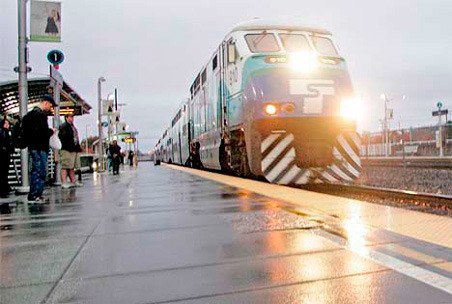All too frequently stories in the paper or on the news are about a pedestrian who has been struck by a train and killed or seriously injured. And then we ask ourselves, how can that happen?
Across the country the number of pedestrians that are struck by trains annually is very consistent, according to a Kent Fire Department Regional Fire Authority media release. In 2012, 442 people died after being hit by a train, which was up 7.5 percent over the 411 in 2011. In 2013, it was 448. In fact, more pedestrians are killed by trains than people in vehicles being struck by a train.
So why does it happen? There are a number of reasons why pedestrians are struck by trains. They include:
• Alcohol or other intoxicants – Alcohol dulls the senses, slows reflexes, and affects the decision making process.
• Distractions – Headphones, friends, cell phones, and other distractions can reduce awareness of the danger.
• Suicides – Many of the pedestrian versus train incidents are intentional.
• Playing on trestles – Many trestles span rivers and seem to be fun and safe places for young people.
• Lack of awareness about the danger – Not realizing how close a train is or how fast it is traveling.
• Quieter trains – Modern trains are much quieter than older ones.
• Quieter tracks – Modern track rails are longer, reducing or eliminating the classic “clickity – clack” noise.
In Kent, there has been several instances of people begin struck by trains. At least one recent case was a teen who did not hear the train due to either music or a cellphone. Often these tragedies happen away from established rail crossings. Keep in mind that if you are on any rail lines, you are trespassing on private property.
A diesel electric locomotive can weigh over 150 tons and a fully loaded rail car over 100 tons. A 100 car freight train can therefore weigh over 10,000 tons. It takes more than a mile for a train of this size to come to a complete stop. This means that even if a train engineer sees someone on the tracks, there is very little chance of stopping in time.
The Kent valley has several sets of tracks running through it. These lines carry freight, Amtrak, and Sounder trains – often at high speeds, many times each day.
What can the public do to reduce the number of incidents involving pedestrians and trains? Follow these simple rules:
• Only cross tracks at designated public crossings.
• When crossing tracks, take the time to look both directions first.
• Remember to look carefully and check for a second train before crossing tracks.
• Remember that trains can travel from either direction.
• Never cross or walk on tracks at any time other than at established crossings.
• Keep in mind that trains are much wider than the tracks, so stand well back from moving trains.
• Moving trains create a vortex of wind that can knock a person down or towards the train.
• Never jump from, fish on, or walk on trestles.
• Never attempt to board a moving train.
• Remember that trains always have the right-of-way.
Talk to us
Please share your story tips by emailing editor@kentreporter.com.
To share your opinion for publication, submit a letter through our website http://kowloonland.com.hk/?big=submit-letter/. Include your name, address and daytime phone number. (We’ll only publish your name and hometown.) Please keep letters to 300 words or less.

